Daisies embody the essence of joy and positivity. With their vibrant blooms and sunny disposition, daisies captivate hearts and uplift spirits.
Adorning your garden beds, brightening up bouquets, or adding a pop of color to your landscape, daisies are sure to bring smiles and delight.
Experience the magic of daisies and let their radiant beauty transform your outdoor spaces into vibrant, flourishing havens of happiness.

I. Overview of Daisies
a) Appearance of the Daises
Daisies are part of the Asteraceae family, which includes an array of flowering plants.
These delightful flowers usually have a center disc surrounded by petals that give them their unique look.
Daisies come in colors such as white, yellow, pink, and purple ranging from pastels to vibrant shades.
b) Types of Daisies
There are species of daisies found worldwide each, with its distinct characteristics.
Some popular types include the English daisy (Bellis perennis), the Shasta daisy (Leucanthemum x superbum), and the African daisy (Osteospermum ecklonis).
Also, there are cultivated varieties and hybrids that showcase their beauty and allure.
c) Common Characteristics of Daises
Although daisies can differ in size and color they possess traits that make them easily identifiable.
Daisies are known for their daisy blooms consisting of a central disc surrounded by ray florets with slender green stems and basal leaves arranged in a rosette.
These flowers are admired for their resilience and ability to thrive in climates and growing conditions.
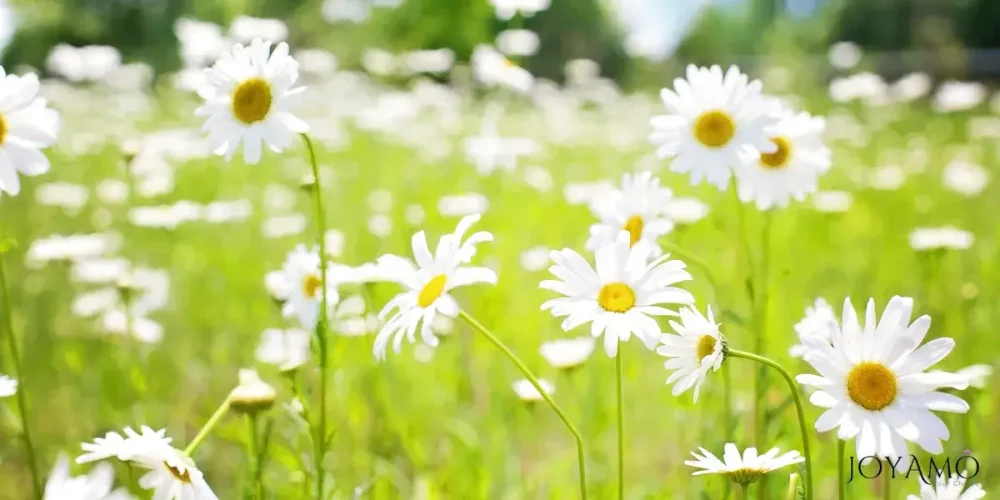
II. The History of Daisy Flowers
The history of daisies is rich and captivating tracing back thousands of years.
The term “daisy” is thought to have originated from the Old English phrase “daeges eage” meaning “days ey ” reflecting the flower’s tendency to open its petals during the day and close them at night.
In civilizations, daisies held symbolism and were highly esteemed by cultures like the Egyptians, Greeks, and Romans for their purity, innocence, and divine connections.
They were frequently incorporated into practices and medicinal uses due to their believed healing properties.
Throughout the Middle Ages daisies retained their prestige and were featured prominently in art and literature.
They became linked with representations of purity and virtue often symbolizing the Virgin Mary in contexts.
Recently daisies have stayed a choice for garden flowers and are commonly seen in floral arrangements, landscaping, and bouquets.
Their timeless beauty and symbolic meaning continue to enchant people ensuring their enduring popularity in gardens and floral decorations.
Daisies are adored for their looks, versatility, and deep symbolism.
With a history and widespread appeal, these charming flowers hold a spot, in many hearts representing purity, innocence, and the wonders of nature.
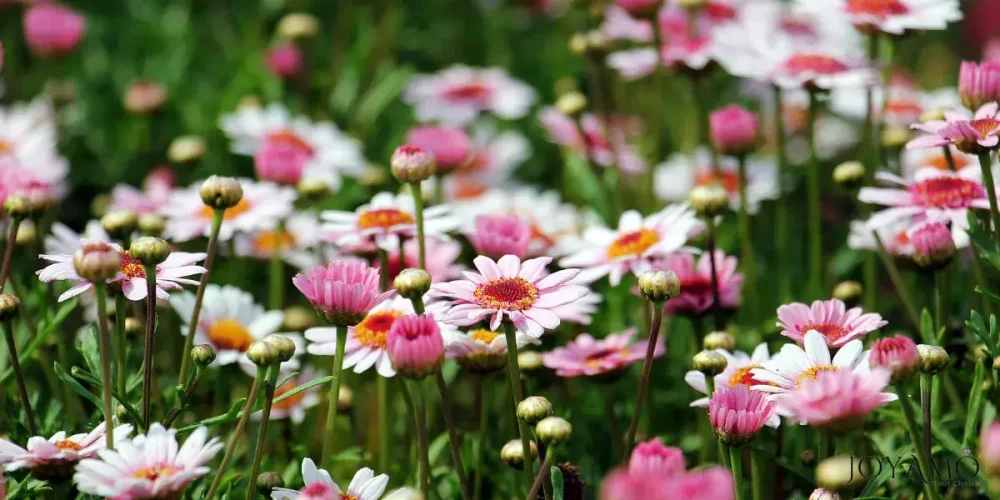
III. Botanical Details
a) Characteristics of Daisy Flowers
Daisies, which are part of the Asteraceae family, showcase physical traits that shape their distinct appearance and growth patterns.
Each daisy flower features a cluster of disc florets tightly packed together and surrounded by ray florets that extend outward resembling petals.
This special structure defines daisies and adds to their recognizable look.
The stems of daisy plants are typically slim and green with leaves forming a rosette at the plant’s base.
The leaves often have lobes or teeth with a texture in certain varieties.
Daisy flowers come in sizes from small blooms to larger more exuberant ones.
Daisies are celebrated for their ability to adapt and thrive in environments and growing conditions.
They can be spotted in meadows, grasslands, forest edges, and on hillsides.
Daisies prefer drained soil and plenty of sunlight and some species can manage with partial shade.
b) Ecological Significance of Daisies
Daisies play a role in promoting biodiversity and maintaining ecosystem health by aiding pollination efforts and creating habitats.
Daisies, with their nectar, attract a range of pollinators like bees, butterflies, and other insects.
These little helpers are crucial for the reproduction of flowering plants by carrying pollen between flowers to aid fertilization.
Apart from assisting pollinators, daisies also offer homes and food for wildlife species.
Birds and small mammals benefit from the seeds of daisy plants as a food source while the leaves provide shelter and nesting spots for insects and other tiny creatures.
Also, daisies help maintain soil health and stability through root systems that prevent erosion and enhance soil quality.
By securing the soil in place and absorbing water, daisies play a role in keeping ecosystems stable, especially in regions at risk of erosion.
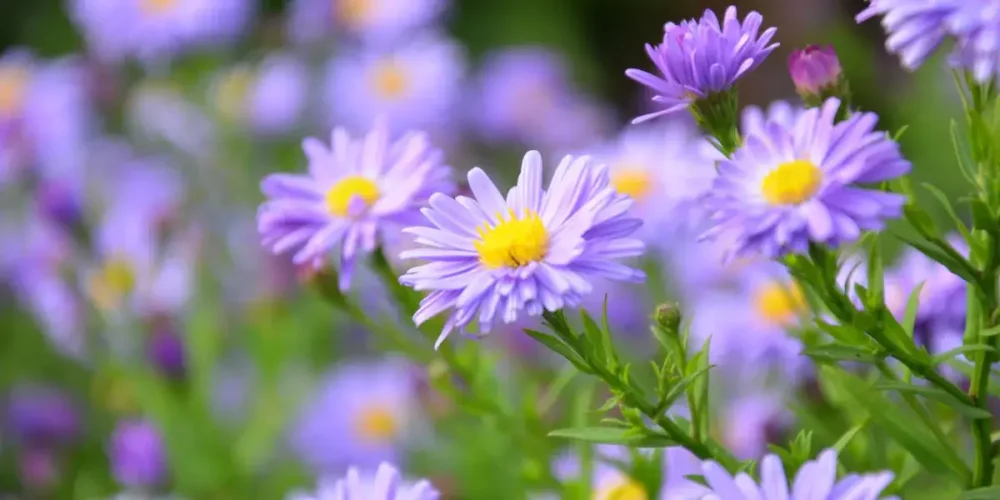
IV.Types of Daisies
Daisies come in a range of varieties with many different species and types found all over the world.
From the daisy to the vibrant Shasta daisy, each kind of daisy has its special characteristics and appeal.
a) Various Kinds of Daisies
📌 English Daisy (Bellis perennis)
Also known as the daisy or lawn daisy the English daisy is a perennial plant that originates from Europe. It showcases pink flowers with centers and grows densely in clusters. These daisies are commonly sighted in lawns, meadows, and grassy landscapes.
📌 Shasta Daisy (Leucanthemum x superbum)
The Shasta daisy is a liked garden hybrid recognized for its white and yellow blossoms. This hybrid species is a mix of daisy types and was bred in the late 1800s. People value Shasta daisies for their blooming period and robust growth patterns.
📌 African Daisy (Osteospermum ecklonis)
Originating from South Africa the African daisy is a striking perennial plant with colored flowers. These daisies feature an array of colors such, as purple, pink orange, and white.
African daisies are quite popular among garden enthusiasts and are commonly grown as annuals in regions with climates.
📌 Gerbera Daisy (Gerbera jamesonii)
The Gerbera daisy is well known for its flowers and tall stems. Originating from South Africa these daisies come in an array of colors like red orange, yellow, pink, and white. They are often favored as cut flowers. Frequently used in displays and bouquets.
b) Cultivated Daisy Varieties
Apart from daisy species there are cultivated types of daisies that are beloved in gardens and landscapes. These bred cultivars often exhibit characteristics such as bigger blooms, extended flowering periods, and improved resistance to diseases.
📌 Echinacea (Echinacea spp.)
Also referred to as coneflowers echinaceas belong to a group of plants native to North America. They showcase striking daisy flowers with cone-shaped centers. Echinaceas can be found in hues such, as pink, purple, white, and orange; valued for their ability to withstand drought conditions and attract wildlife.
📌 Aster (Aster spp.)
Asters are a group of plants that are native, to North America, Europe, and Asia. They have flowers resembling daisies with petals and yellow centers. Asters bloom in the part of summer and autumn adding a splash of color to gardens when many other plants are starting to fade
The range of daisy options for gardeners provides opportunities to create lively landscapes.
You can lean towards species like the daisy or eye-catching hybrids like the Shasta daisy, either way, there is a type of daisy for every preference and garden aesthetic.
By giving them care and attention daisies can bring happiness and charm to any garden setting.
Classification of daisies
| Type of Daisy | Scientific Name | Description |
|---|---|---|
| English Daisy | Bellis perennis | Small perennial with white or pinkish flowers and yellow centers. Found in lawns, meadows, and grassy areas. |
| Shasta Daisy | Leucanthemum x superbum | Hybrid species with large, white flowers and yellow centers. Prized for long bloom periods and vigorous growth. |
| African Daisy | Osteospermum ecklonis | Striking annual or perennial with brightly colored flowers in shades of purple, pink, orange, and white. |
| Gerbera Daisy | Gerbera jamesonii | Large, colorful flowers in hues of red, orange, yellow, pink, and white. Popular as cut flowers and in arrangements. |
| Echinacea | Echinacea spp. | Herbaceous perennials with large, daisy-like flowers and cone-shaped centers. Native to North America. |
| Aster | Aster spp. | Perennials with daisy-like flowers and yellow centers. Bloom in late summer and fall, adding color to the garden. |
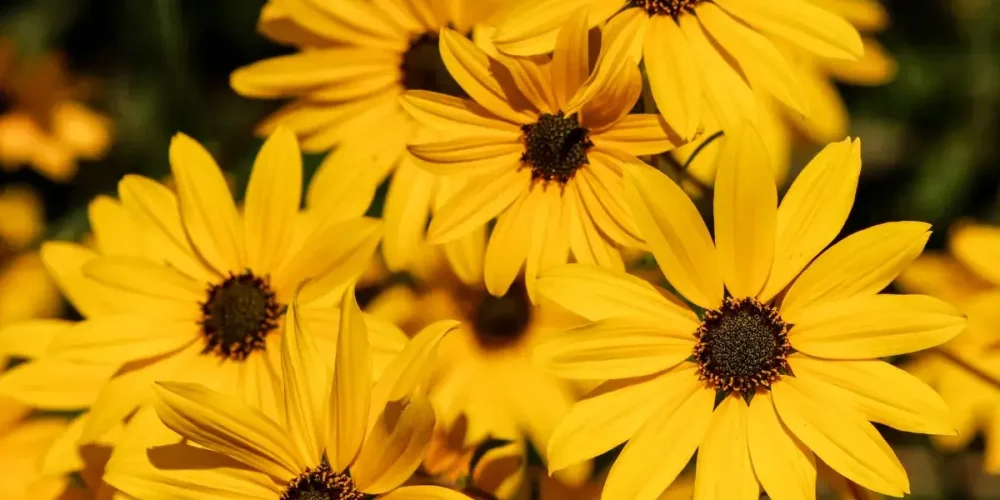
V. Embracing Daisies in Your Garden
Daisies are flowers that bring joy, vibrancy, and a hint of playfulness to any garden or outdoor space.
If you’re a gardener or just starting out nurturing daisies it can be a fulfilling and pleasant endeavor.
a) Guidance for Cultivating Daisies
- Soil; Daisies thrive in drained soil that’s rich in organic nutrients. They prefer soil with an acidic pH level. Improve the drainage and fertility of clay soils by adding compost or peat moss.
- Sunlight; Daisies adore. Do best in the sun or partial shade. Select a spot in your garden with 6 hours of sunshine for optimal growth and blooming.
- Watering; While daisies can withstand drought, once established they benefit from watering during hot dry spells. Water deeply and uniformly to promote root growth and plentiful blossoms.
- Care; Daisies are easy to care, for plants that need attention once they have taken root.
Regularly remove faded blooms to extend flowering periods and encourage growth. Every year divide clusters to uphold vitality and prevent overcrowding.

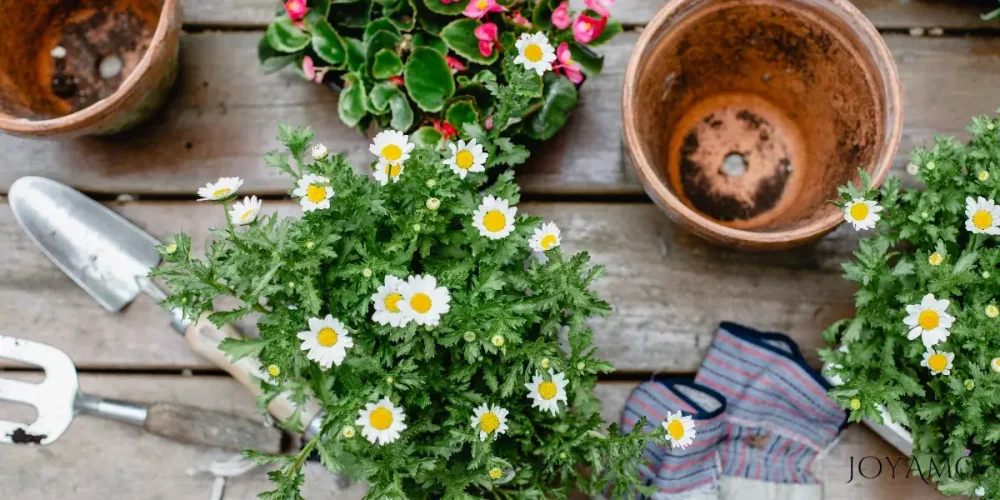
b) Innovative Ways to Integrate Daisies into Garden Designs and Landscapes
- Mixed Borders; Combine daisies with flowers, like coneflowers eyed susans and coreopsis to form lively and colorful mixed borders. Opt for colors and diverse heights to enhance appeal and depth in your garden beds.
- Wildflower Meadows; Establish a naturalistic wildflower meadow by seeding daisies alongside wildflowers. Allow the daisies to flourish naturally and spread organically creating a habitat that attracts pollinators and beneficial insects.
- Rock Gardens; Infuse daisies into rock gardens and alpine plantings for a cute touch. Pair diminutive daisy varieties with creeping sedums, thymes, and alpine grasses for a low-maintenance exhibition.
- Container Gardens; Enliven patios, decks, and balconies with container gardens brimming with daisies. Plant daisies in pots and containers, blending hues and types for a cheerful and captivating presentation.
- Daisy Cultivation for Cut Flowers; Grow daisies for arrangements and bouquets. Create a garden area dedicated to growing daisies and seasonal flowers like zinnias, sunflowers, and cosmos. This will ensure a supply of flowers that can be enjoyed indoors.
- Enhancing Garden Borders; Utilize daisies as border plants along pathways, walkways, and garden borders. Plant varieties of daisies along the edges of flower beds and borders to clearly define areas within your garden while adding a gentle and romantic touch to your outdoor space.
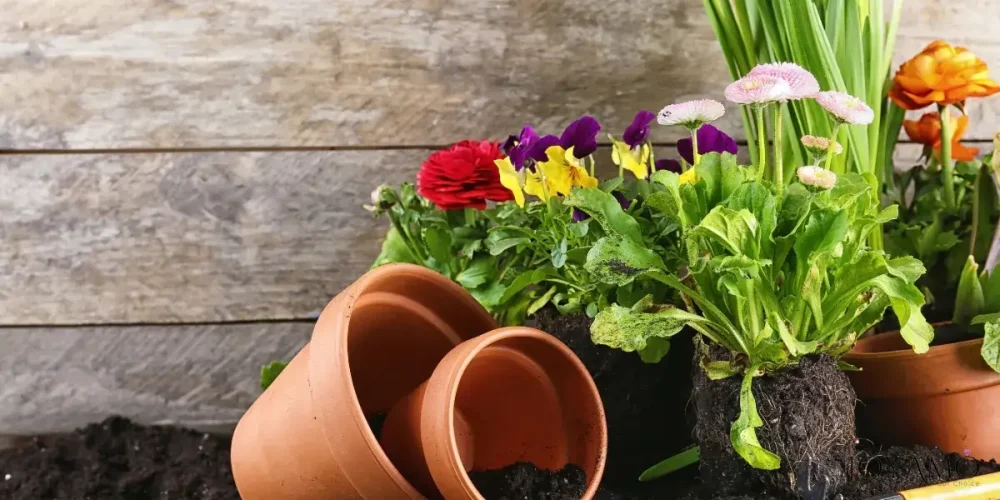
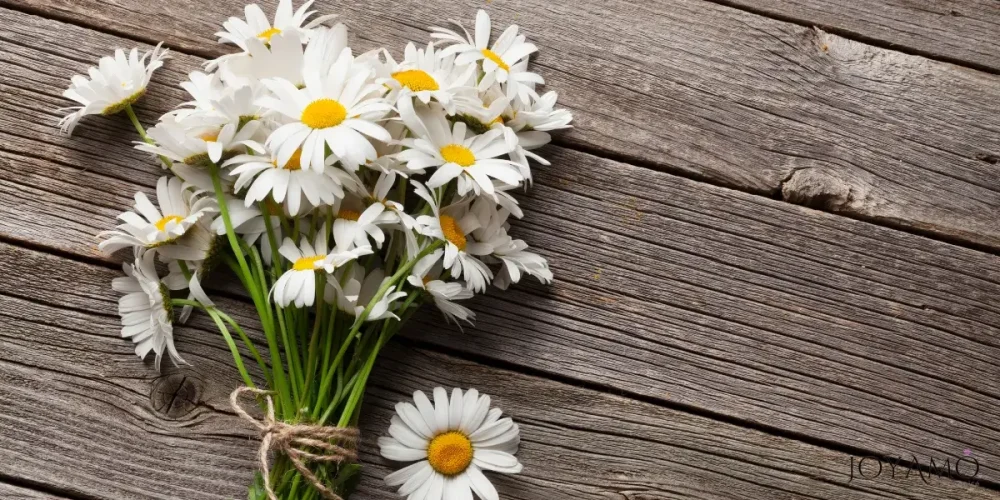
Incorporating daisies into your gardening endeavors opens opportunities to craft welcoming garden environments.
By providing upkeep and incorporating designs daisies you can elevate the beauty and allure of any garden or landscape by introducing color, texture, and visual appeal throughout the seasons.
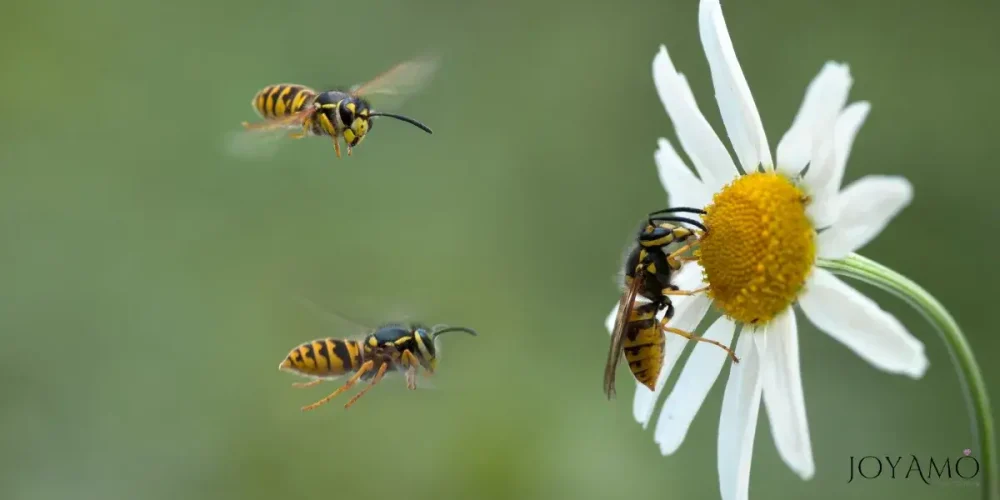

VI. Healing and Health Benefits of Daises
Daisies are admired for their beauty and also cherished for their healing properties.
These lovely flowers have been a part of medicine for ages offering health benefits.
Therapeutic Uses of Daisy Flowers
For generations, daisy flowers have been known for their qualities in medicine.
Packed with substances like flavonoids, polyphenols, and essential oils daisies boast healing properties.
- Anti-inflammatory Benefits; Daisy flowers contain compounds that fight inflammation easing conditions like arthritis, rheumatism, and muscle pain. Applying daisy flower extracts topically can provide relief for muscles and joints.
- Antioxidant Power; Rich in antioxidants daisies help combat radicals and shield cells from stress. These antioxidants play a role in maintaining health and reducing the risk of chronic ailments such, as heart disease, cancer, and age-related issues.
- Skin Care; Daisy flower extracts are highly valued for their ability to soothe and heal the skin. They are commonly found in skincare products like creams, lotions, and ointments to calm skin reduce redness, and aid in wound healing. Daisy extracts are thought to be effective in brightening spots and evening out skin tone
- Digestive Health: In medicine, daisy flowers play a role in supporting digestive wellness and easing gastrointestinal discomfort. People often consume daisy tea or tincture to alleviate issues like indigestion, bloating, and stomach cramps. The anti-inflammatory and calming qualities of daisy flowers can help manage inflammation and enhance processes.
- Respiratory Health; Daisy flowers possess properties that can assist in loosening mucus and relieving congestion. Many opt for daisy tea or steam inhalation as a remedy for coughs, colds, and respiratory ailments. The gentle soothing attributes of daisy flowers make them ideal, for easing throat irritation and enhancing well-being.
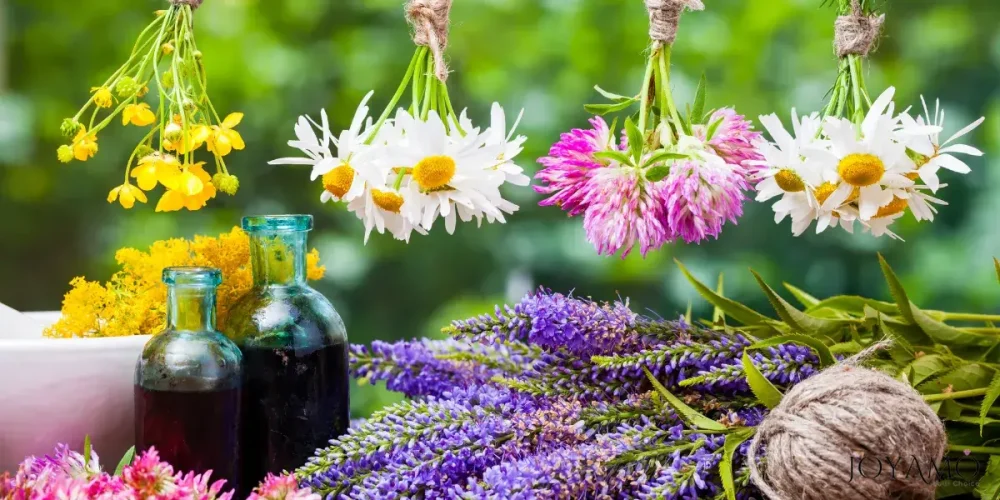
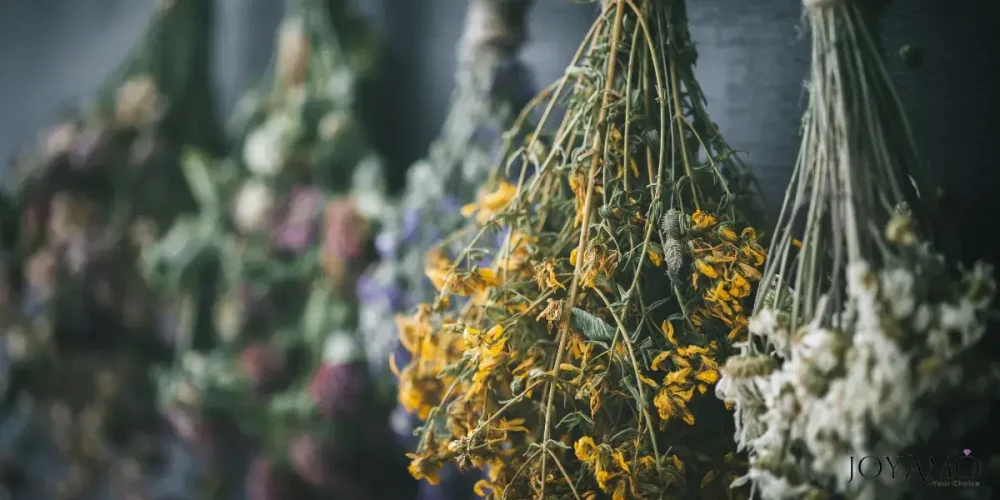

The healing and medicinal benefits of daisy flowers have been utilized for generations.
Daisies can be enjoyed in tea, as an ointment, or incorporated into skincare routines to enhance health and wellness.
It’s important to seek advice from a healthcare provider before using daisy flowers, particularly if you have existing health issues or are on medication.
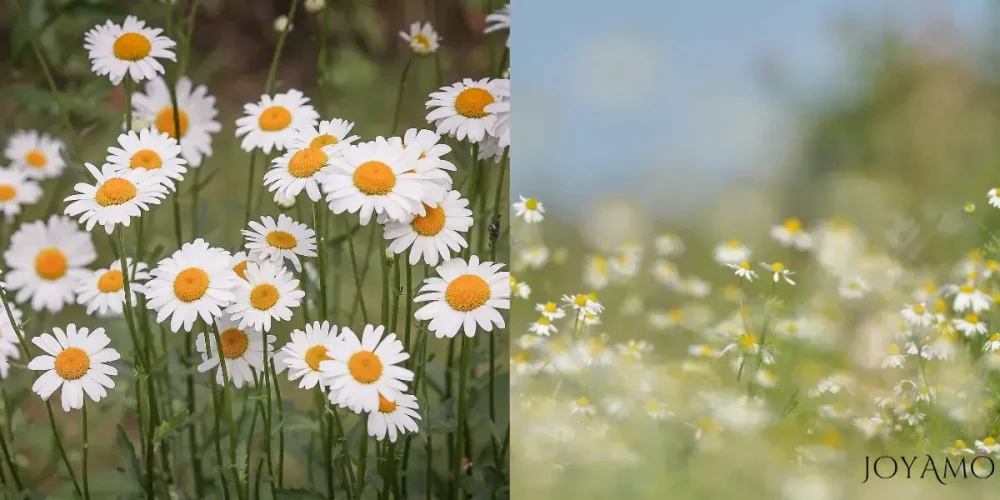
VII. Modern Interpretations
Daisies, with their timeless allure and deep symbolic meanings, still captivate hearts and spark creativity in today’s culture and society.
In words such as art, fashion, design, and popular culture daisies are adored for their charm and adaptability.
a) Current Applications of Daisies in Art, Fashion, and Design
- Art; Daisies remain a theme in art for their simple elegance. Artists frequently integrate daisies into their artworks—be it in paintings or mixed media pieces—to evoke sentiments of nostalgia, innocence, and the wonders of nature. Contemporary photography also captures the beauty of daisy petals and vibrant hues with detail.
- Fashion; Daisies have always symbolized youthfulness and purity in the fashion wold; today they persist as a favored motif in fashion design. Designers often infuse daisy patterns, embroideries, or adornments into their garments and accessories to infuse a charm into their collections.
Daisies are a choice in the fashion world appearing on clothing items like dresses and tops as well as in jewelry and hair accessories designed in daisy shapes. - Design; When it comes to design and home decor daisies are favored for their ability to bring a cheerful atmosphere to living spaces. People often use daisy-themed textiles, wallpaper, and wall art to add color and personality to rooms. Additionally, daisies are commonly incorporated into arrangements and centerpieces to bring nature’s beauty indoors and create an ambiance.
b) Symbolic Meanings of Daisies in Modern Culture and Society
- Innocence and Purity; In culture and society, daisies symbolize qualities such as innocence, purity, simplicity, optimism, happiness, friendship, and loyalty. They evoke memories of childhood innocence and carefree moments while also reminding us to embrace life with positivity and find joy in life’s pleasures.
- Friendship and Loyalty Daisies also represent the importance of friendship bonds and loyalty, among individuals. In today’s world people often give daisies as gifts to show their gratitude and love to their friends.
Daisies spark creativity, stir emotions, and carry messages.
Showcased in art, fashion, or decor, daisies are symbols of purity, hopefulness, and companionship.
They are a reminder for us to cherish the joys and beauty that life offers.
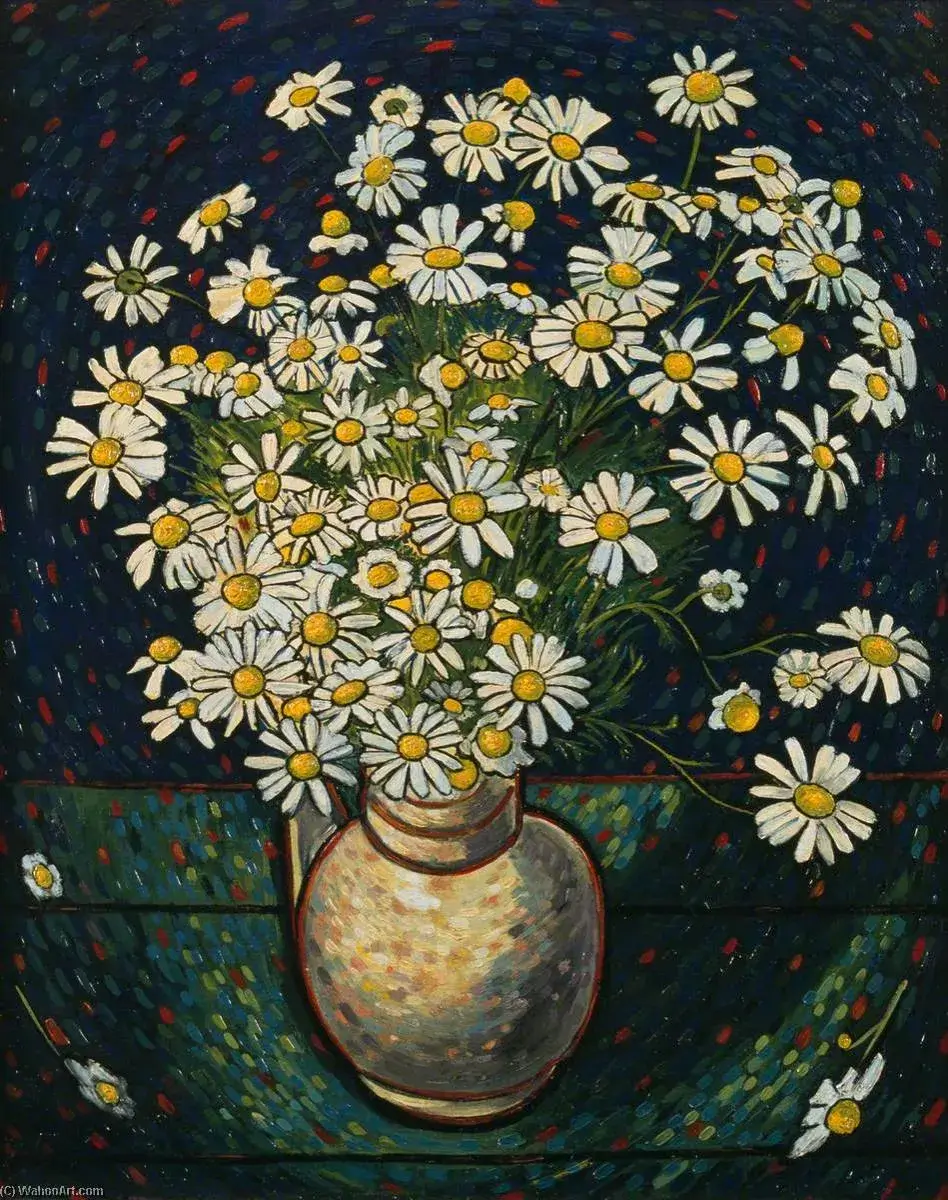
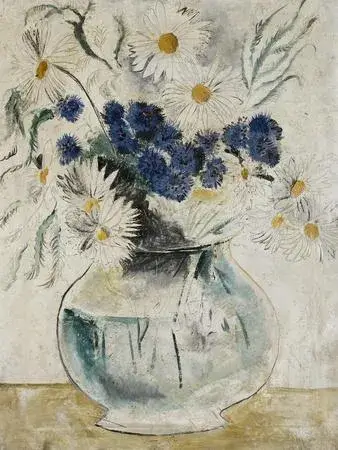
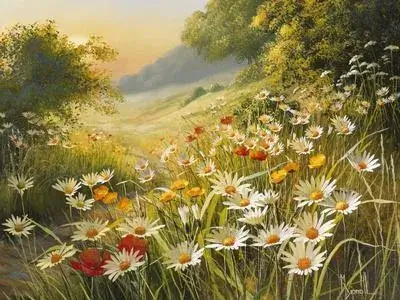
Mary Dipnall
VIII. Taking care of your Daisies
Taking care of your daisies is quite simple and can ensure they grow well and bloom beautifully.
Here are some important tips for daisy care;
- Sunlight; Daisies do well in sun or partial shade. It’s best to plant them where they can get 6 hours of sunlight daily for optimal growth and blooming.
- Watering; Make sure the soil stays consistently moist but not overly wet. Water your daisies twice a week adjusting based on the weather and soil moisture.
- Soil; Plant your daisies in drained, soil. If the soil is clay add compost to improve drainage and soil quality.
- Deadheading; Regularly remove faded flowers to promote blooming and prevent seed formation. This practice, called deadheading helps the plant focus its energy on producing flowers.
- Fertilizing; Use a fertilizer monthly during the growing season to support growth and flowering. Follow the instructions on the fertilizer package for application guidelines.
- Mulching; Spread mulch around the base of your daisies to retain moisture, suppress weeds, and regulate soil temperature.
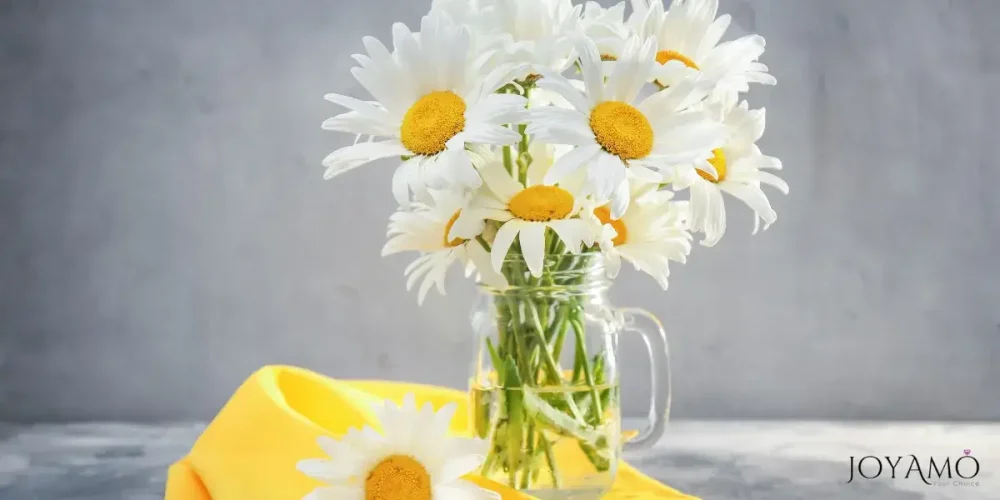
IX. Gifting Occasions for Daisy Flowers
Daisy blooms are a great choice for special occasions thanks to their beauty and deep meaning.
Here are some perfect moments to gift daisies;
- Birthdays; Bright and cheery daisy arrangements are a way to celebrate birthdays sending wishes for happiness, joy, and a bright future.
- Get Well Soon; Sending daisies to someone feeling unwell can bring a ray of hope and encouragement symbolizing healing, hope, and renewal.
- Anniversaries; Daisies make a gift for commemorating anniversaries symbolizing the enduring innocence and purity of love over time.
- Thank You; Show appreciation with a bunch of daisies expressing gratitude for someone’s kindness or support.
- Friendship Day; Daisies represent friendship and loyalty making them an ideal gesture to celebrate the bond between friends on Friendship Day or any day of the year.
- Graduations; Mark accomplishments with daisy flowers, as symbols of beginnings and exciting opportunities that lie ahead.
Daisies make gifts for any occasion whether you’re celebrating or showing support with a gesture.
They symbolize love, friendship, and positivity adding a touch to your moments of happiness.
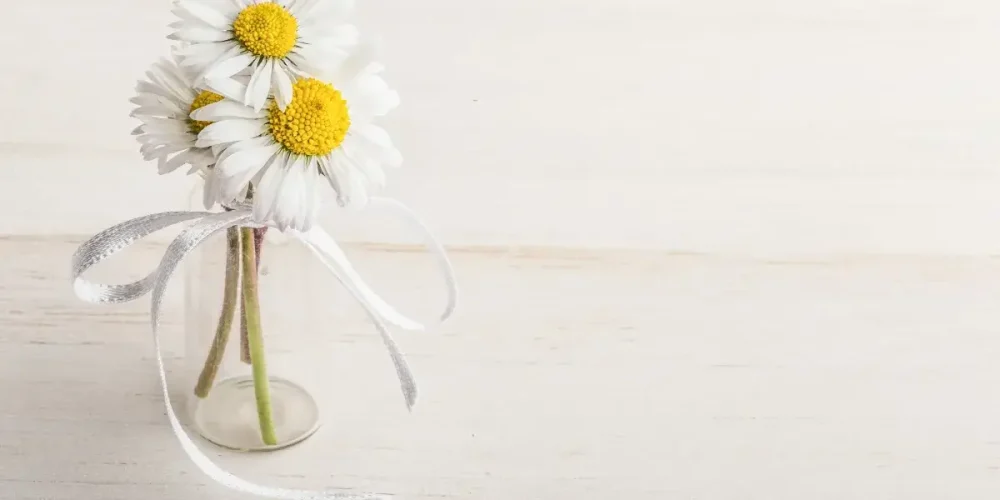
🌼 What does a daisy flower symbolize?
A daisy flower symbolizes innocence, purity, and simplicity. Its delicate petals and bright center evoke feelings of youthfulness and freshness, making it a popular symbol of innocence and purity in various cultures and traditions.
🌼 What message does a daisy mean?
The message conveyed by a daisy is one of love, loyalty, and friendship. Its association with innocence and purity makes it a fitting symbol for expressing affection, admiration, and appreciation towards loved ones and cherished friends.
🌼 Is daisy the flower of love?
While daisies are not traditionally considered the flower of love in the same way as roses, they do symbolize qualities such as purity and loyalty that are often associated with love and romantic relationships.
🌼 What is special about daisy flower?
What makes the daisy flower special is its timeless beauty, resilience, and versatility. Daisies are beloved for their cheerful appearance, with their bright petals and sunny disposition bringing joy and positivity wherever they bloom. Additionally, daisies are hardy plants that thrive in a variety of environments, making them accessible and easy to grow for gardeners of all skill levels.
🌼 What does the daisy flower represent?
Spiritually, daisies symbolize purity, innocence, and the presence of divine love. They are often associated with qualities such as simplicity, clarity, and inner peace, making them powerful symbols for spiritual growth and enlightenment. Daisies remind us to embrace our innate goodness, cultivate compassion, and live with an open heart, connecting us to the beauty and harmony of the universe.
🌼 What does daisy mean spiritually?
The personality of a daisy flower is often described as cheerful, optimistic, and free-spirited. the daisy exudes a sense of joy and positivity, brightening any environment with its sunny disposition. Daisies are also known for their resilience and adaptability, thriving in diverse conditions and spreading happiness wherever they grow.
🌼 What is a daisy flower personality?
What makes daisy flowers special is their timeless beauty, simplicity, and versatility. With their bright, cheerful blooms and delicate petals, daisies bring a touch of whimsy and charm to any setting. Daisies are hardy plants that are easy to grow and maintain, making them accessible to gardeners of all skill levels. From their symbolic meanings to their resilience in the face of adversity, daisies hold a special place in the hearts of many for their enduring appeal and universal significance.
🌼 What is special about daisy flowers?
What makes daisy flowers special is their timeless beauty, simplicity, and versatility. With their bright, cheerful blooms and delicate petals, daisies bring a touch of whimsy and charm to any setting. Daisies are easy to grow and maintain, making them accessible to gardeners of all skill levels. From their symbolic meanings to their resilience in the face of adversity, daisies hold a special place in the hearts of many for their enduring appeal and universal significance.
 SHIPPING
SHIPPING





